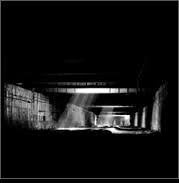This article discusses Margaret Morton’s book “The Tunnel: The Underground Homeless of New York City” and the photographs of the homes built by the homeless people in the city. Nersessova does this using the views of the Situationalist International theory from Karl Marx.
In the beginning of the article Neressova defines homelessness as being without a stable home. The term stable is important because she explains that the people we call homeless have built homes for themselves, but they are not stable. She also talks about the designs of some of these homes they have created and what they represent. She said that the way each home is created is significant to the person living there because “identity is closely tied to one’s place of home” and a result of them always moving is that their identity is “consistently fragile”. The fact that they continue to rebuild theses homes each type they move, shows that their “creative response to instability”. A common issue homeless people faced was the city destroying their homes and closing off the tunnels where they were built, taking away their identity. This often makes them vulnerable and she explains that this represents the “universal relationship between space and the splintered identity”. They space they have determines how they will build their homes and the homes they build become their identity. This changes when they have to change the space.
Nersessova, then talks about Morton’s photography of the urban areas in New York and the role they play in a “society of the spectacle”. She discusses this using the views of the Situationist International (SI) which acknowledges the difference between the “society of the spectacle” and the “reality of homelessness”. According to the SI, people use the media to decide what they will consume and how they understand themselves.
In Morton’s book, she discusses the significance of the tunnels with some of the people she interviewed that lived in the tunnels. A common thing they said was that they felt safe in the tunnels, as odd as it may seem, even though it looked like a dangerous place. They didn’t have worry about getting robbed or attacked, because they felt like no one want to risk coming into the dark tunnel. They also liked the tunnels and the underground part of the city because there was less traffic, which made it safer for them.
The photographs in Morton’s book gives a visual of what is the reality of homeless people’s lives. It provides an inside look at how they actually live and instead of how we, as a society, assume they do. It also gives the views of outsiders looking in on their lives. They are afraid of the tunnels because they fear the unknown and that is a product of our society.
